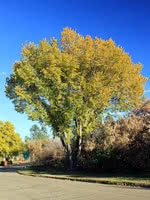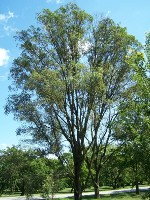Mon-Fri 9am - 5pm Mountain time
American Elm vs Siberian Elm
Ulmus americana
Ulmus pumila
PRODUCTION CANCELLED
American Elm is fast growing, tall tree with a recognizable and pleasing shape.
It's well suited for urban environments because of its non-invasive roots and ability to grow on harsh sites (quite salt tolerant). American Elm develops a wide, dense canopy that provides shade for many city streets around North America.
Siberian Elm is a small to medium-sized deciduous tree. It has a similar form to American Elm, but smaller, with a more pyramidal habit and shorter lifespan. It is also more resistant to Dutch Elm disease and is very salt tolerant.
Siberian Elm was grown as shelterbelts in the prairies after the Dustbowl disasters, where its rapid growth and tolerance for drought and cold initially made it a great success. It is an excellent shade tree.
Note: Due to it's increasingly controversial reputation for being invasive in warmer climates, we are no longer planning to grow this species for retail purchase on a regular basis.
American Elm Quick Facts
Siberian Elm Quick Facts
In row spacing: 2.4 - 3 m (8 - 10 ft)

